¶ Map
The initial situation is:
- The aircraft is flying at heading 330° and at 5500ft near UHWW Knevichi Vladivostok airport
- The radio navigation Non-Directional Beacon - (NDB) used is MURAVEYKA BG 920 kHz
- The target is to intercept the 240° inbound track of the BG NDB (direction is red arrow)
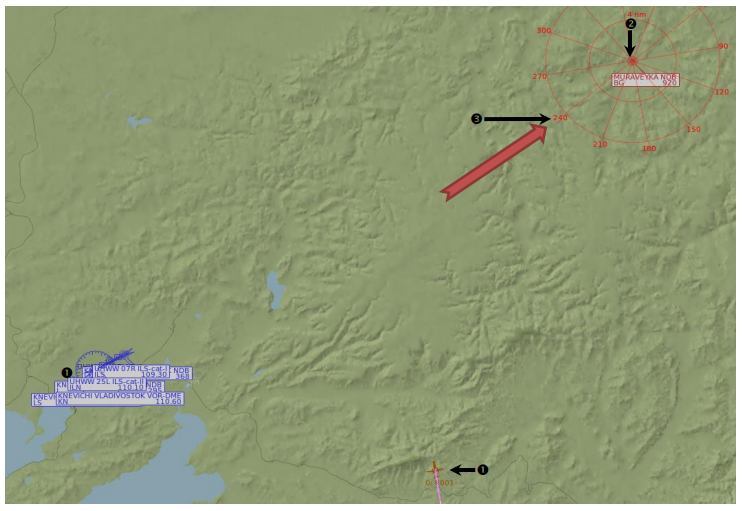
¶ Cockpit instruments
¶ Instrument descriptions
Please refer to the following page for more information on the cockpit instruments we are using: Radio-Magnetic Indicator
¶ Tune the navigation instrument
In order to make the interception manoeuvre, you must tune the radio equipment:
- Tune navigation instrument using the NDB frequency 920 kHz
¶ Intercept and track a NDB radial
¶ Intercepting the NDB track
After the instrument tuning, you can follow the progress of interception following the needle on the RMI instrument.
- Progressively the needle of the RMI will turn toward the wanted course direction or the opposite course direction (course±180°).
- Monitor the target on your instrument. As we want to intercept track 240° inbound, the needle target is the number for heading 060° (060°=240°-180°)
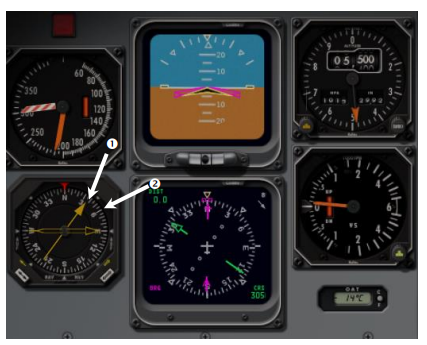
If you do not know the distance from the beacon, do not anticipate an interception turn or you can intercept the NDB track very far from your position.
For efficient radial interception, we advise to cross the track first.
¶ Intercepting track
With maintaining heading, you will normally cross the radial.
- The needle on the RMI instrument shall point to the wanted NDB track or opposite track direction (course±180°).
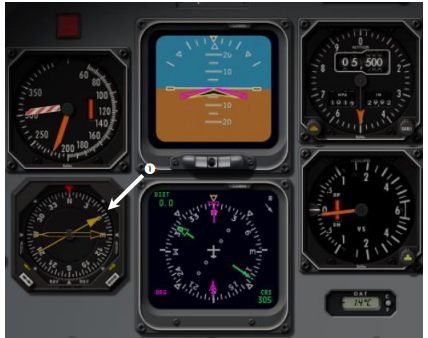
In the example, the needle points toward the beacon at 060° for the 240° track
At this time, as we want to follow the 240° NDB track inbound, we shall turn our aircraft to 060° heading.
For information, if you want to follow the 240° NDB track outbound, you shall turn your aircraft to 240° heading.
¶ Establishment of the NDB track
We are turning to heading 060°.
After the turn, we want to follow the 240° track inbound of the NDB:
- As we were already on the wanted track, before the turn, we will overshoot the track. The needle is not exactly in front of the wanted angle.
- We need to go back to the track in order to intercept it again.
- We will adjust our heading in order to intercept the track.
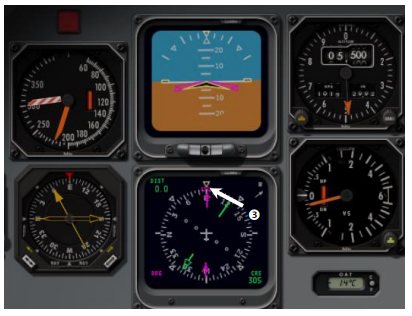
If the aircraft turns clockwise (to the right), just add 15° to 30° to the course, or if the aircraft turns anticlockwise (to the left) just remove 15° to 30° from the wanted heading
¶ Reaching the course heading
Now you start to turn for intercepting the radial smoother, using a 15° to 30° interception angle.
If you estimate that the overshoot is not important, you can select a 15° interception angle, otherwise select 30°. The exact instant for the last turn is sometimes difficult to know. If you are close to the NDB, then you can initiate the turn sooner than if you are very far from the beacon.
The next figure shows:
- We need a 30° interception heading (here 060°+30° =090°) in order to re-intercept the wanted track
- Monitor RMI deviation and estimate the right moment to turn back on the wanted track (60°) for track establishment.
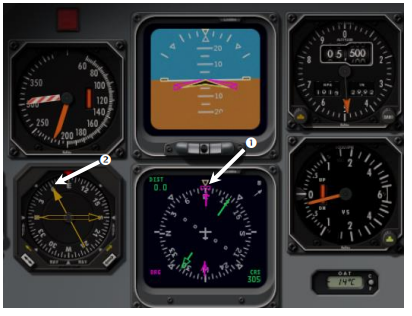
A lower angle than 15° will impose a late interception or a non-possible interception when facing heavy crosswinds.
A higher angle will create another overshoot and another interception cycle.
¶ Following the radial
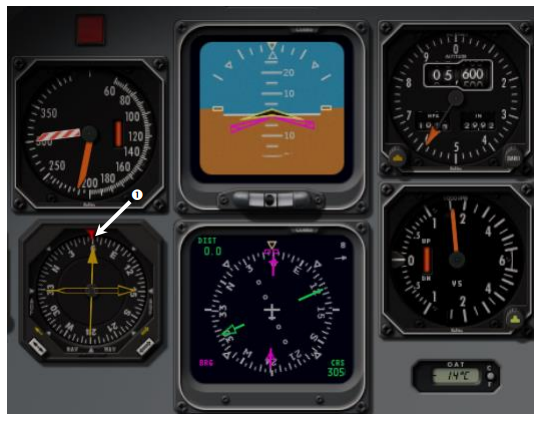
In this picture, you can see that the 240° track of the wanted NDB is intercepted and you start to follow this track:
- The RMI instrument points toward the beacon. As we fly inbound to the NDB, the RMI shall point to the north like the image.
- When following the radial, you must take into account the crosswind effect. The heading shall be adjusted as necessary in order to keepthe needle of the RMI pointed to the selected track (here 060°) even if the heading is not 060°.
¶ Final mapping of NDB inbound track interception
In the next figure, you will find:
- 240° NDB track crossing when maintaining initial heading
- 240° NDB track interception procedure using 30° interception angle
- 240° NDB track following
![]()
- None
- None
- VID 150259 - Creation
- VID 200696 - Wiki integration
- VID 496402 - Wiki.js integration